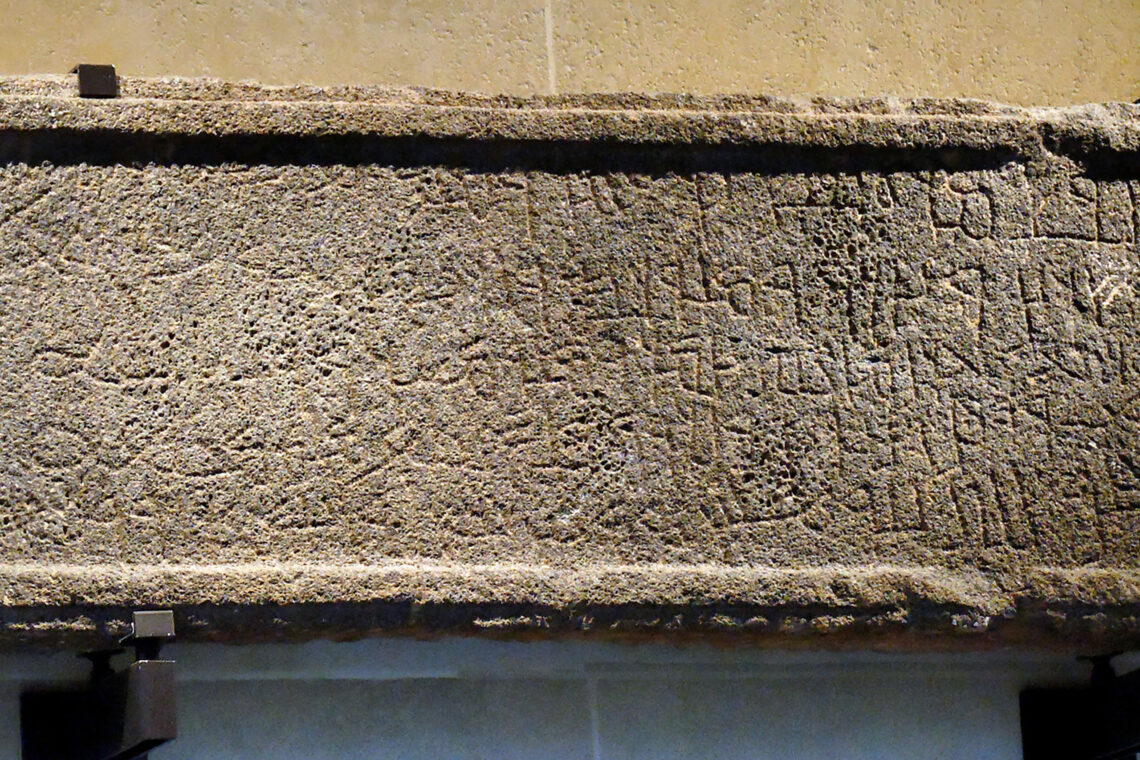Not long after I reviewed Reza Aslan’s work on Jesus, I came across Geza Vermes’s excellent study, Christian Beginnings: From Nazareth to Nicaea (2013), that shows how Jesus’ iconoclastic but decidedly Jewish message grew in time into the complex faith of Christianity. We need to know that Judaism was, at first, a monolatry, meaning that Jews, without having to discredit other people’s divinities (not just hand-made idols), worshipped their God only. The idea of one God for the whole world—monotheism—developed in the 6th century BC following the exilic (forced transfer to Babylonia) and post-exilic (return to Judah) periods. Still, Judaism was a religion of deeds, not one of faith and dogma, as the belief system developed by Paul and John would later become. The Christianity that emerged in the first five centuries of our era would have been unrecognizable to the charismatic preacher known to us as Jesus.
It was the great sociologist Max Weber who came up with the concept of charisma to explain the phenomenon of leaders with self-endowed qualities whose actions almost always go against existing customs. In ancient Judaism, charismatic leaders had direct access to God and were inspired by, and endowed with, divine powers to perform supernatural deeds, or miracles. The last millennium BC saw the rise of prophets, or “men of God,” who were not beyond committing atrocities, but who were generally “wonder-workers.” The prophets Moses, Elijah and Elisha as well as King Solomon all had such powers. Since illness was associated with sin, these prophets were healers, exorcists (or gazers) and rainmakers; they ended famines and resuscitated the recently deceased. Sometimes, their style was abrasive to “bourgeois sensibilities,” but they also confronted the devil and won the combat handily. Such charismatic work contrasted with the bureaucratic function of priests, whose job was the application of written laws and the strict observation of doctrine. Charisma was the gift that gave Jesus his powers.
Notwithstanding his style, Jesus was clearly a Jew. He never deviated from the law and displayed all the traits of traditional biblical charismatic prophets. He healed, exorcised, raised the dead, even after four days (Lazarus), and performed countless other supernatural feats (such as feeding thousands with few loaves and fish), even though the people of his hometown in Nazareth remained mostly unimpressed, leading to his famous saying that “a prophet is without honor only in his hometown, among his own kin, and in his own house.”
It was this charisma that allowed Jesus to mesmerize audiences in Galilee with predictions of the impending end of the world and the imperative to repent in hopes of entering the “Kingdom of God” (an old Jewish idea) safely. Like other Jews, Jesus saw God as his Father and himself as his Son, albeit not literally, only in the sense, well known in Judaism, of closeness.
Jesus was circumcised and didn’t break any Sabbath restrictions. He came “not to abolish but to fulfill” the law of Jewish prophets, while adapting such laws to a new age. He valued the innocence of children over the traditional wisdom of elders, faith over empty rituals, and stressed the privacy of prayer. Another salient feature of his approach was his insistence on absolute faith and the willingness of believers to sacrifice everything, including their body parts and family connections, for the sake of repentance and entrance to Kingdom of God. But Jesus didn’t talk about a church.
That Jesus operated in the area broadly known as the Holy Land is a reminder of his Jewish identity. Jerusalem and its Temple (until its destruction in AD 70) was the main center of Christian activity. Christians, or Nazarenes, at worst, were seen as a sect, much like the Pharisees, Sadducees, Essenes, or Ebionites. Jesus’ Jewish followers accepted that he was the Messiah. For the Gentiles (resident aliens in Israel)–at least those in Jerusalem–conversion meant becoming Jewish first (undergoing circumcision). Jesus expressed no desire to spread his message beyond the confines of Palestine or to establish a church; it was Paul, a Roman Jew from southern Turkey, preaching in the Greco-Roman world, who pursued both. In the New Testament, Jesus followers were known as a congregation or church, Christian (Messianist), or followers of “The Way,” much like the rabbinic notion of halakhah (to walk).
Christianity distinguished itself with its therapeutic powers and the glossolalia (speaking in tongues) of those seized by the Holy Spirit and entranced by ecstasy. Jesus followers broke bread on Sundays and, after the crucifixion of Jesus, believed that he rose and would soon return. When his imminent return kept being delayed, it was replaced by the virtue of perseverance and patience, even though believers were supposed to remain on guard that such an event could happen any time. For those who scoffed at this notion, Pseudo-Peter, writing in the first half of the second century, explained that for God, “one day is like a thousand years and a thousand years is like one day.”
This is, more or less, the extent of Jesus’s direct influence. It was, as is well known, Paul who laid down the foundations of a belief system that would be called Christianity. Paul tried to reach everyone—he wanted to “become all things to all people”–but Jewish resistance, even hostility, led him to concentrate on Gentiles who gathered in congregations or house-churches. Even though the idea of baptism, or purification, had long been practised in Judaism, Paul gave it a more allegorical meaning, one in which the person of Jesus Christ plays a far bigger role.
Eating bread at the Lord’s Supper—symbolically the body of Jesus—became a pillar of Christianity. With few exceptions, Paul liberated dietary rules, even though most of his morals were Jewish. But here, too, he innovated by prohibiting divorce and, at the same time, permitting “virgin marriages.” The spread of Pauline communities, especially outside the Holy Land, necessitated an administrative structure, with each church led by a bishop and his helpers. A bishop “had to be blameless, prudent, temperate, not addicted to wine, gentle and self-controlled, and having a good reputation among non-Christians.” He had to be married, too, which is surprising, since Jesus himself, as Vermes humorously puts it, would not have qualified for the job.
For Paul, Jesus was the second Adam and another Isaac, sacrificed this time for good, to help atone for the sins of the faithful. Therefore, belief in Jesus was essential to salvation and the imminent Second Coming was an article of faith during much of the 1st century AD. That moment was due to arrive when the whole world, as far west as Spain, would be converted. Yet, despite the place he gave to Jesus in this new eschatological scheme, Paul never equated Jesus with God; he only allowed him a sort of middle ground position, one that is below God but above mere humans.
With such measures, Paul turned the preaching of a charismatic Jew into a complex religion designed for the wider world, not just the limited audience in the Holy Land. Jesus, the itinerant Jewish preacher, was transformed into the “Lord of the Universe.”
With the Fourth Gospel, most likely written in the first decade of the second century, Jesus was further transformed into the eternal “Word (Logos) of God” turned flesh. He became the “Son” or “Lamb” of God. The Holy Spirit now dwelled in the believers. John presented quite an epic story, but it is also one that would eventually lead to the “Christological controversies” that plagued Christians of subsequent centuries and which led to the ecumenical councils of Nicaea (325), Chalcedon (451), Constantinople (553), and others. In time, a whole series of rules were added by other writers. Abstention from fleshly passions, praying for one’s enemy, turning the other cheek, fasting, hospitality and other acts were introduced as staples of the faith. Jesus became the “Master” and the “Ruler.”
Rome at first tolerated the Christians as long as the latter recognized Roman gods, but during the reign of Nero they were charged with “misanthropy” or “odium humani generis” and persecuted. With persecutions ebbing and flowing, the church continued to expand. A “monarchic episcopacy” emerged, with Jesus, the “charismatic prophet,” rising to the status of divine “Son of God.”
As Christianity evolved away from its Jewish milieu, Jews were accused of killing Christ and, consequently, of having forfeited the right to be called Israel. Orthodoxy was enforced not only as a response to Judaism but also to Gnosticism and other heresies. For the Carthage-born, legally trained Tertullian “every man’s soul” was “Christian by nature.” A rigorous Salafist (as Muslims would say), he disqualified anything not traced back to Jesus’ disciples. To counter heresy, he depicted Jesus as both divine and human, sharing, along with the Holy Spirit, the same substance as the Father. In this way, Tertullian also prefigured the contentious debates, beginning with Nicaea (325), that would define (and tear apart) Christianity in the 4th and 5th centuries. He outlawed second marriages, wanted women to be veiled, and valued martyrdom. He had no time for philosophy, either: “What has Athens to do with Jerusalem?” he famously asked.
Up until the 4th century, the distinction between Father and Son was rather clear—the Son never being equal to the Father—even though the Son shared in his Father’s divine qualities. Both may have been co-eternal, but they were not quite the same.
Reading Vermes’ work makes it clear that Christianity started out as an expression of radical Jewish thought and gradually evolved, within the Greco-Roman world, into a Roman religion that denied its Jewish origins and conveniently forgot the Roman execution of the Lamb. What is interesting, too, is that the “Christological controversies” that helped define Christianity would later find an echo in yet another new religion—Islam.





Hi there! Although I no longer consider myself a practicing Christian, I found it interesting that you mentioned that Jesus himself never mentions church during his lifetime. If this is true, how would you interpret the verse Matthew 16:18, in which Jesus says “And I tell you that you are Peter, and on this rock I will build my church.” Although he was Jewish, why was it the Jews who ultimately shouted “Crucify him!” Jesus upon his resurrection initiates what some evangelicals have coined as “The Great Commission” in which he states “Therefore go and make disciples of all nations” (Matthew 28:19). I’m curious if these verses have somehow been misinterpreted, or how the author ultimately came to this conclusion?
Kileygirl, you are using Paul’s own writing for verification of his fiction. Your argument is completely illogical.